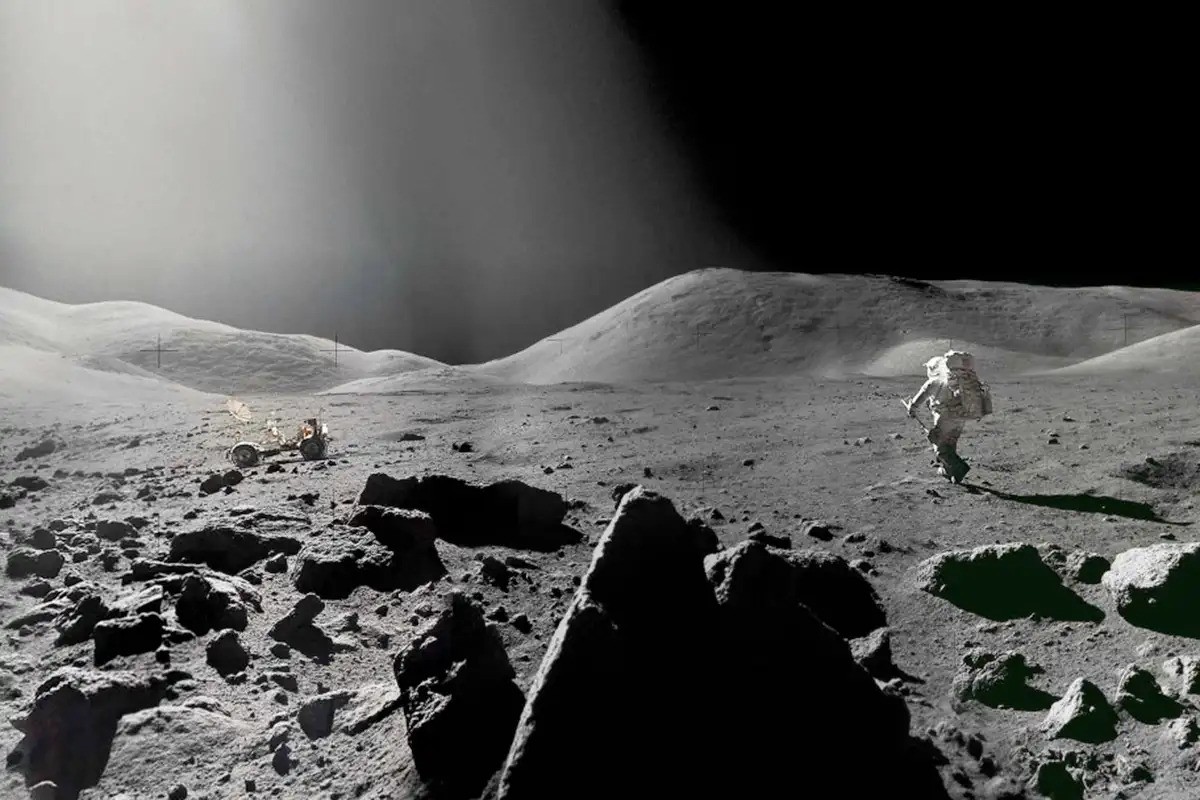Scientists have created a new computer model of moon dust that reproduces its properties extremely accurately. Engineers believe that it will help in training robots that will autonomously perform tasks that are sent to them from Earth.

Collecting lunar soil
Scientists have developed a regolith model that mimics moon dust so well that it can help better train robots that will explore the surface of our moon. The tool, developed by researchers at the University of Bristol based at the Bristol Robotics Laboratory, can also be used to prepare astronauts for lunar missions.
Working with its industry partner, the British company Thales Alenia Space, which has a special interest in creating robotic systems for space applications, the team explored a virtual version of moon dust.
The lunar regolith is of particular interest for future lunar exploration missions planned for the next decade. Scientists can potentially extract valuable resources from it, such as oxygen, rocket fuel or building materials, in order to ensure the long-term presence of people on this celestial body.
Simulation of lunar reality
Remote-controlled robots are becoming a practical choice for regolith collection due to lower risks and costs compared to human spaceflight. However, controlling robots over such long distances leads to significant delays in the system, which makes it difficult to control them. Now when the team knows that this simulation behaves like reality, they can use it to mirror the control of the robot on the Moon. This approach allows operators to control the robot without delay, ensuring a smoother and more efficient process.
This study was the result of previous work by the team, which found that experienced robot operators wanted to train on their systems with gradually increasing risk and realism. This means that they start with a simulation and move on to using physical mockups before going on to use a real system. An accurate simulation model is crucial for training and developing operator confidence in the system.
Although some particularly accurate models of moon dust have been developed previously, they are so detailed that they require a lot of computing time, which makes them too slow for smooth robot control. Researchers from DLR (German Aerospace Centre) have solved this problem by developing a virtual model of regolith that takes into account its density, stickiness and friction, as well as the reduced gravity of the Moon. Their model is of interest to the space industry because it does not require large computing resources, and therefore can be run in real time. However, it works better with small amounts of moon dust.
“Ideal model” for robots
The goal of the Bristol team was, firstly, to expand the model so that it could work with a large amount of regolith, while remaining light enough to work in real time, and secondly, to test it experimentally.
The main focus of the scientists in this project was on improving the user experience for the operators of these systems — how could we make their work easier? They started with the original virtual regolith model developed by DLR and modified it to make it more scalable. Then they conducted a series of experiments, half in a simulated environment, half in the real world, to measure whether the virtual moon dust behaves the same way as its real counterpart.
Since this regolith model is sufficiently accurate, scalable, and easy to use in real time, the research team will further explore whether it can be used in controlling robots to collect regolith. They also plan to explore whether it is possible to develop a similar system to simulate Martian soil, which may be useful for future research missions, or to prepare scientists to work with materials from the long-awaited Mars Sample Return mission.
According to phys.org
Follow us on Twitter to get the most interesting space news in time
https://twitter.comne/ust_magazine


